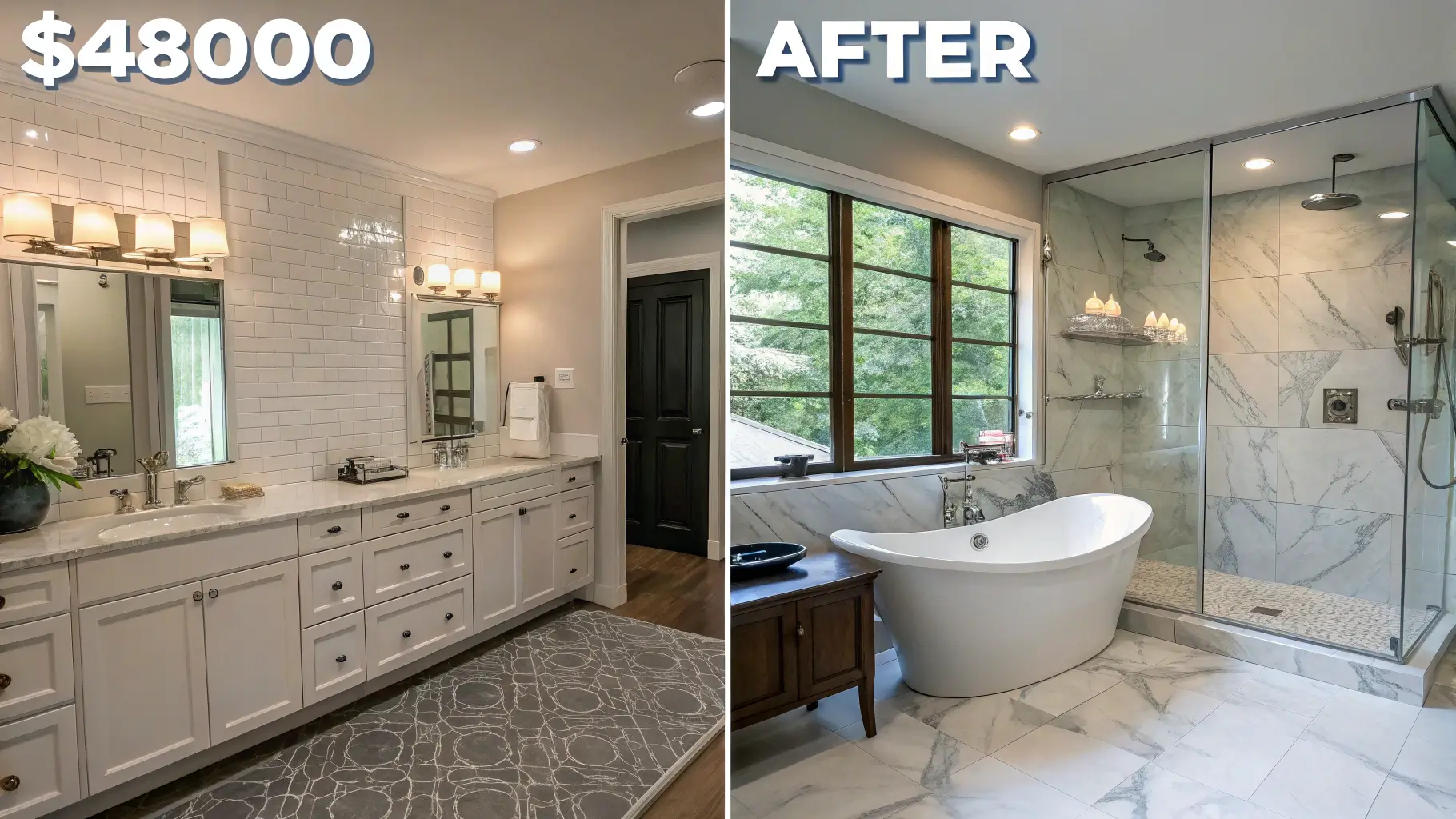Dreaming of a stunning new bathroom but dreading the potential price tag? Planning a bathroom remodel can feel overwhelming, with countless decisions impacting your wallet. The good news is, achieving your dream space without financial stress is entirely possible with the right knowledge and tools. This comprehensive guide will help you create a realistic budget for a bathroom remodel, empowering you to make informed decisions from start to finish.
We’ll dive deep into average costs, reveal hidden expenses, explore smart savings strategies, and even provide real-world case studies. By the end, you’ll have a clear understanding of costs, maximum return on investment (ROI), and access to powerful, interactive tools, making this your definitive resource for confident renovation planning.
TABLE OF CONTENTS
Understanding Realistic Bathroom Remodel Costs
Establishing a realistic budget is the cornerstone of any successful renovation. Bathroom remodel costs can fluctuate dramatically based on numerous factors. Understanding these variables upfront will help you set accurate expectations and avoid unwelcome surprises. From the size of your space to the quality of materials and the scope of work, every decision contributes to the final tally.
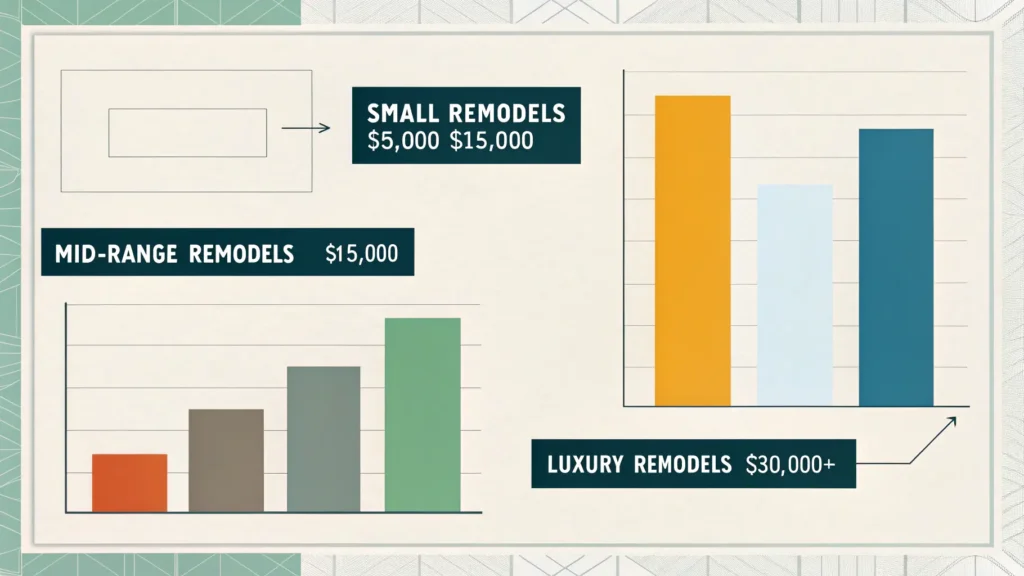
Average Costs by Project Scope (Refresh, Mid-Range, Luxury)
Bathroom renovations typically fall into three broad categories, each with distinct cost implications. Knowing where your project aligns is the first step in creating a realistic budget for a bathroom remodel.
- Small Refresh (Cosmetic Update): This typically involves surface-level changes like painting, updating fixtures (faucets, lighting), replacing a vanity or toilet, and minor tiling work. It avoids structural changes or reconfiguring plumbing. Expect costs to range from $3,000 to $10,000. For example, refreshing paint, upgrading a mirror, and installing a new pre-fab vanity.
- Mid-Range Remodel (Major Renovation): This scope involves more significant changes, such as replacing the bathtub/shower, new flooring, a custom vanity, updated lighting, and potentially minor layout adjustments without moving major plumbing lines. Costs typically fall between $10,000 and $30,000. This could include a new tiled shower surround and a semi-custom vanity.
- Luxury Remodel (High-End Overhaul): This category often includes a complete gut renovation, moving walls or plumbing, installing high-end custom cabinetry, premium materials (marble, designer tiles), advanced fixtures (steam shower, smart toilet), and potentially expanding the bathroom footprint. These projects can easily exceed $30,000, with many reaching $50,000+. Think spa-like features and top-tier finishes.
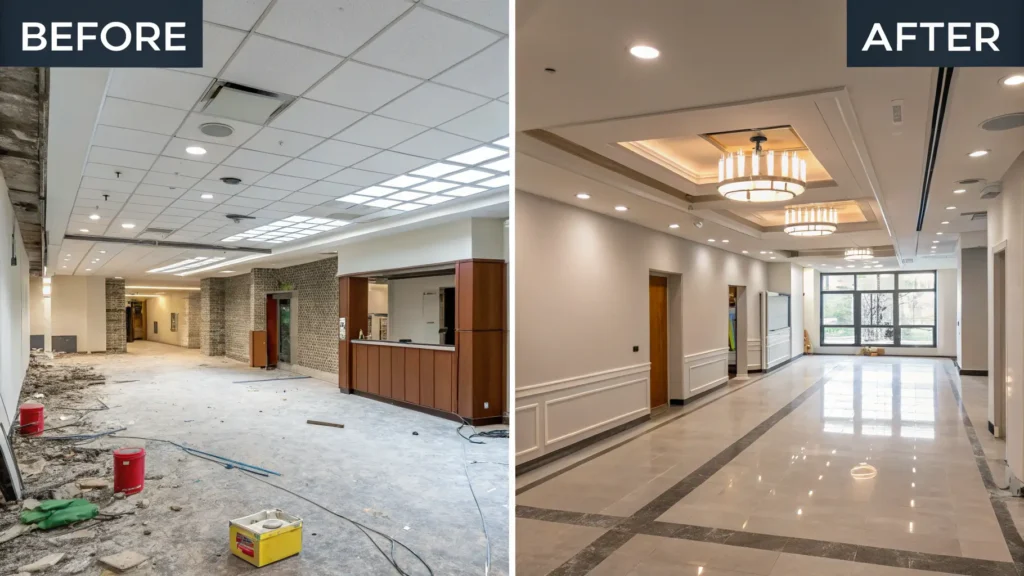
The Impact of Location: National Averages vs. Local Realities
While national averages provide a general baseline, local realities significantly impact bathroom remodel costs. Labor rates, material availability, and even permit fees can vary wildly from one region to another. A renovation that costs $15,000 in a rural area might easily be $25,000 or more in a major metropolitan hub like New York or San Francisco.
Factors influencing regional costs include:
- Local Labor Rates: Highly populated, high-cost-of-living areas generally have higher labor costs for plumbers, electricians, and general contractors.
- Material Shipping & Availability: Remote areas might incur higher shipping costs for specialized materials, while major cities may offer more competitive pricing due to higher supply.
- Permit Costs: Local building departments charge varying fees for permits, which are mandatory for most significant renovations involving plumbing or electrical work.
Deep Dive: Breaking Down Your Bathroom Remodel Expenses
To build a truly realistic budget for a bathroom remodel, you need to understand where every dollar goes. A detailed breakdown ensures transparency and helps you allocate funds effectively. Every component, from the largest fixture to the smallest nail, has an associated cost.
Key Component Costs (Fixtures, Finishes, Labor, & More)
Here’s a breakdown of the typical cost allocations for various elements in your bathroom remodel:
- Labor (30-50% of total budget): This is often the largest expense.
- General Contractor: Manages the entire project, typically charges 10-20% of the total project cost.
- Plumber: Essential for moving or updating pipes, installing new fixtures (shower, toilet, sink). Average rates vary significantly by region.
- Electrician: Needed for new lighting, outlets, ventilation fans.
- Tiler: For flooring, shower surrounds, and backsplashes.
- Painter: For walls and ceilings.
- Demolition: Can be a separate cost if not included in a general contractor’s bid.
- Fixtures (20-30% of total budget):
- Vanity & Countertops: Pre-fabricated units are cheaper, custom designs are more expensive. Materials range from laminate to quartz and marble.
- Shower/Bathtub: Basic acrylic tubs are affordable; custom tiled showers, freestanding tubs, or walk-in showers significantly increase costs.
- Toilet: Standard models are inexpensive; comfort-height, dual-flush, or smart toilets cost more.
- Faucets & Hardware: Styles and brands vary widely in price.
- Lighting: Recessed lighting, vanity lights, and accent lighting.
- Finishes (15-25% of total budget):
- Flooring: Porcelain or ceramic tile is popular; natural stone, luxury vinyl plank (LVP), or engineered wood are also options.
- Wall Finishes: Paint is cheapest; wallpaper, wainscoting, or accent tiles add to the cost.
- Shower Surrounds: Tiled walls are standard for a mid-range or luxury remodel; pre-fabricated acrylic or fiberglass inserts are budget-friendly.
- Other (5-15% of total budget):
- Demolition & Debris Removal: Hauling away old materials.
- Ventilation: A new or upgraded exhaust fan.
- Permits & Fees: See the next section for a deeper dive.
Factors That Significantly Influence Your Budget & Hidden Costs
Beyond the visible components, several underlying factors and often-overlooked “hidden costs” can drastically alter your final bathroom remodel budget. Failing to account for these can lead to frustrating overruns.
- Scope & Complexity: A simple cosmetic update is far less expensive than a full gut remodel involving structural changes, moving walls, or reconfiguring plumbing and electrical lines. Complex designs or unusual layouts increase labor hours and material needs.
- Material Quality: The choice between builder-grade, mid-range, or high-end luxury materials can represent a several-thousand-dollar swing. For instance, a laminate countertop is significantly cheaper than granite or quartz.
- DIY vs. Professional: While DIY can save on labor costs, it demands significant time, skill, and tools. Mistakes can be costly. For plumbing, electrical, or structural work, professional help is often non-negotiable and safer.
- Hidden Issues: This is often the biggest budget buster. Once walls are opened, you might discover:
- Old Plumbing & Electrical Wiring: Outdated or non-code-compliant systems will require costly upgrades.
- Mold or Water Damage: Leaks can cause significant structural damage to subflooring, drywall, and framing, requiring extensive repair and remediation.
- Subfloor Issues: Weak or damaged subflooring needs reinforcement or replacement before new tiles can be laid.
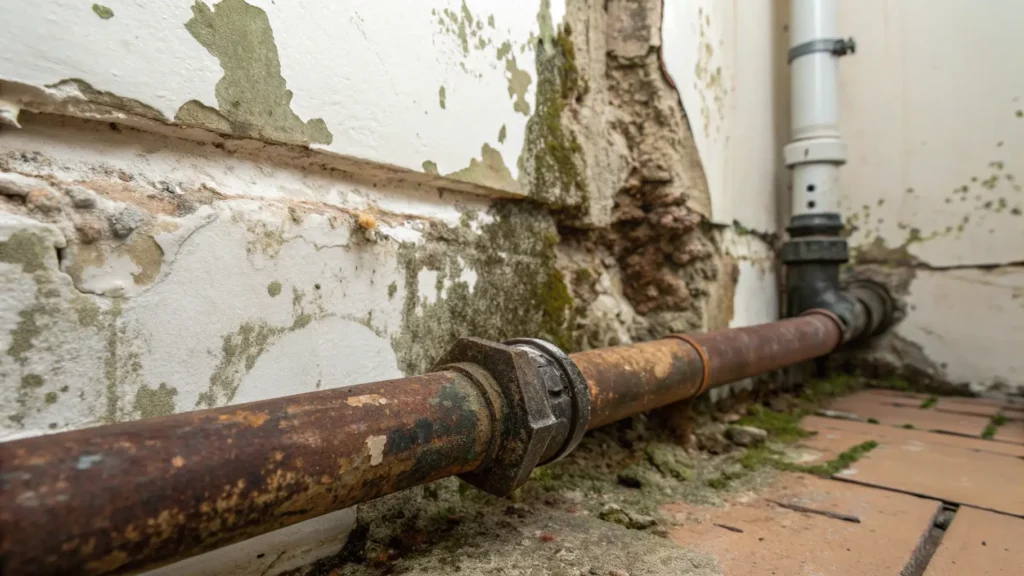
The Unseen Budget Busters: Permits & Unexpected Issues
Permits are not optional; they are required for most major bathroom remodels involving changes to plumbing, electrical, or structural elements. Skipping them can lead to fines, forced demolition, and difficulties selling your home.
- Types of Permits: Plumbing, electrical, and building permits are common. Some localities also require mechanical permits for ventilation.
- Average Costs: Permit costs vary widely, from a few hundred dollars to over a thousand, depending on your location and the scope of work.
- Local Variations: Always check with your local municipal building department early in the planning process.
Contingency Fund: To safeguard against these unforeseen expenses, always allocate a contingency fund of 10-15% of your total project budget. This acts as your financial buffer. As veteran contractor Mark Johnson advises, “No matter how meticulously you plan, old houses always have a surprise waiting behind the walls. A contingency fund isn’t a luxury; it’s a necessity.”
Maximizing Your ROI & Smart Strategies to Save Money
A bathroom remodel isn’t just about personal enjoyment; it’s also an investment in your home’s value. Strategic planning can maximize your return on investment (ROI) while smart choices help you save money without sacrificing quality.
- Projects with the Best ROI:
- Minor Bathroom Update: A mid-range remodel (averaging around $25,000) can recoup approximately 60-70% of its cost at resale. Focus on appealing to a broad audience with classic, clean designs.
- Strategic Upgrades: Focusing on key areas like a new vanity, fresh paint, modern lighting, and updated fixtures often yields better ROI than over-customizing.
- Strategic DIY vs. Professional Hiring Decisions: Tackle simple tasks like painting or demolition yourself if you have the skills, but leave complex plumbing, electrical, or structural work to licensed professionals. This is where a realistic budget for a bathroom remodel distinguishes between savings and costly mistakes.
- Smart Material Sourcing and Affordable Alternatives:
- Shop Sales: Look for sales on tiles, fixtures, and vanities.
- Consider Alternatives: Opt for high-quality porcelain or ceramic tiles instead of expensive natural stone. Laminate or solid surface countertops can be excellent, cost-effective alternatives to granite or quartz.
- Warehouse Stores: Bulk buying at home improvement warehouses can offer savings.
- Getting Multiple Bids, Negotiating with Contractors: Always get at least three detailed quotes from different contractors. Compare bids line by line and don’t be afraid to negotiate. A good contractor will explain their pricing and be transparent.
- Repurposing Existing Elements, Timing Your Remodel: Can your existing vanity be repainted? Can you re-glaze an old tub instead of replacing it? Timing your remodel during a contractor’s slower season might lead to better rates.
- Avoiding Common Budget Mistakes:
- Scope Creep: Sticking to your initial plan is crucial. Every “just one more thing” adds to the cost.
- Impulse Buys: Plan all purchases meticulously.
- Ignoring the Contingency Fund: As mentioned, this is vital.
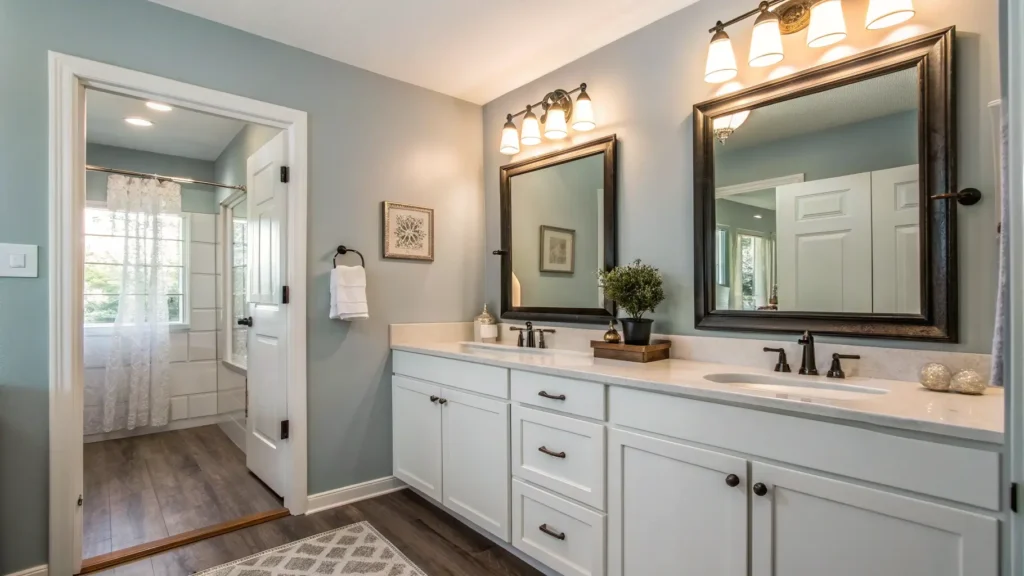
ROI Hotlist: High-Impact, Cost-Effective Upgrades:
- Fresh Paint & New Lighting: Dramatically changes the feel for minimal cost.
- Updated Vanity & Faucet: A stylish new focal point.
- Reglazing an Old Bathtub: Much cheaper than replacement if the tub is structurally sound.
- Modern Toilet: High-efficiency models save water and enhance aesthetics.
- Luxury Vinyl Plank (LVP) Flooring: Durable, waterproof, and stylish for a fraction of the cost of real wood or high-end tile.
Interior designer Sarah Chen suggests, “To make a bathroom look luxurious on a budget, focus on tactile elements: a beautiful, oversized mirror, elegant hardware, and textured towels. These small details elevate the space without breaking the bank.”
Financing Your Bathroom Remodel: Options & Comparisons
Understanding your financing options is a critical step in creating a realistic budget for a bathroom remodel. Most homeowners don’t pay for a major renovation entirely out of pocket. Various lending solutions are available, each with its own advantages and disadvantages.
- Home Equity Line of Credit (HELOC): A revolving line of credit secured by your home equity. You can borrow as needed, up to a certain limit, during a draw period, and interest is only paid on the amount borrowed.
- Home Equity Loan: A lump-sum loan secured by your home equity, repaid in fixed monthly installments over a set period.
- Personal Loan: An unsecured loan (not backed by collateral), meaning interest rates can be higher, but approval is often quicker, and it doesn’t put your home at risk.
- Credit Cards: Only advisable for very small projects or if you can pay off the balance quickly, as interest rates are typically very high.
- Renovation Loans (e.g., FHA 203k): Government-backed loans specifically designed for home improvements, often with lower interest rates and flexible terms.
for more information : how to finance you bathroom remodel
Designing for Tomorrow: Sustainable & Smart Bathroom Costs
Position your bathroom remodel for the future by considering sustainable practices and smart home technology. While some of these options have a higher upfront cost, they often deliver significant long-term savings and environmental benefits.
- Eco-Friendly Materials:
- Recycled Glass Tiles: Beautiful and environmentally responsible.
- Low VOC (Volatile Organic Compound) Paints: Healthier for your home and the planet.
- Sustainably Sourced Wood: For vanities or accents, ensures responsible forestry.
- Cost Implications: Often on par with traditional mid-range materials, but some specialized options may be higher.
- Water-Saving Fixtures:
- Low-Flow Toilets: Use significantly less water per flush.
- WaterSense-Labeled Showerheads & Faucets: Reduce water consumption without sacrificing performance.
- Smart Faucets: Can have touchless operation and precise temperature control, minimizing water waste.
- Upfront Cost vs. Long-Term Savings: Higher initial investment often leads to substantial savings on your water bill over time. For example, a low-flow toilet can pay for itself in water savings within a few years.
- Smart Home Technology:
- Smart Mirrors: Integrated lighting, defoggers, and even displays for news or weather.
- Smart Showers: Digital controls for precise temperature and water flow, often with pre-set preferences.
- Automated Lighting/Ventilation: Sensors turn lights on/off and activate fans when needed.
- Cost and Convenience: These add a premium to your realistic budget for a bathroom remodel but offer unparalleled convenience and can contribute to energy efficiency.
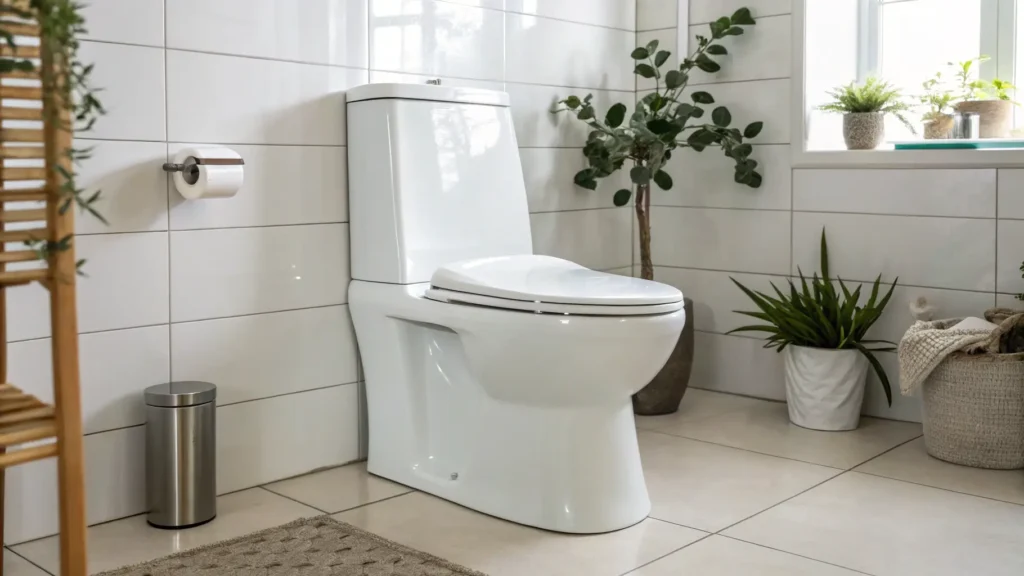
Many regions offer rebates or incentives for installing water-saving fixtures. Check with your local utility provider or government environmental programs for potential savings.
Real-World Bathroom Remodel Case Studies & Budget Examples
Seeing actual projects with transparent cost breakdowns can provide invaluable insights for your own realistic budget for a bathroom remodel. Here are a few representative case studies illustrating different scopes and budgets:
Case Study 1: The Efficient Refresh – Total Cost: $7,200
- Before: Small (5×7 ft) guest bathroom with outdated vinyl floor, builder-grade vanity, and chipped fiberglass tub/shower combo.
- Scope: New paint, reglazed existing tub, new toilet, pre-fabricated vanity with cultured marble top, new LVP flooring, updated light fixture, and faucet. No changes to layout or plumbing.
- Cost Breakdown:
- Labor (paint, flooring, installation): $3,000
- Vanity & Top: $800
- Toilet: $250
- LVP Flooring: $650
- Light Fixture & Faucet: $400
- Paint & Supplies: $200
- Tub Reglazing: $500
- Demolition/Disposal (DIY): $100
- Contingency: $1,300 (used for unexpected subfloor repair)
- Lessons Learned: DIY demolition saved money. Reglazing the tub was a significant saving over replacement. The contingency fund was essential for addressing a minor subfloor issue.
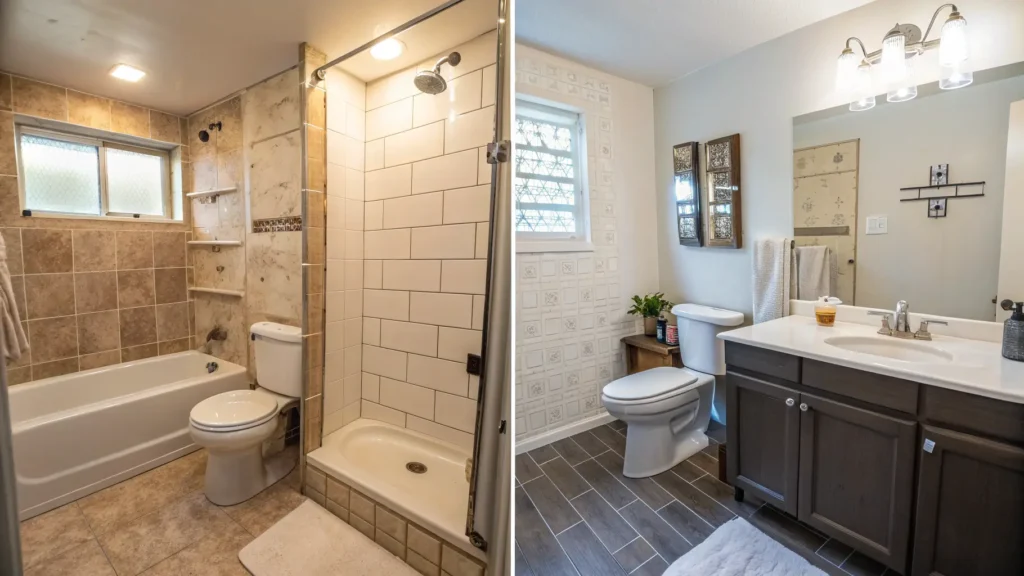
Case Study 2: The Mid-Range Modern Update – Total Cost: $21,500
- Before: Standard (8×10 ft) master bathroom with 1990s tile, oak vanity, and a separate tub/shower unit.
- Scope: Full gut. New custom tiled walk-in shower with glass door, new double vanity with quartz countertop, new porcelain floor tiles, new toilet, updated lighting, fresh paint. Minor plumbing adjustments for shower relocation within existing footprint.
- Cost Breakdown:
- Labor (GC, plumber, tiler, electrician): $11,000
- Custom Vanity & Quartz Top: $3,500
- Walk-in Shower (tile, pan, glass door, fixtures): $4,000
- Porcelain Floor Tile: $1,200
- Toilet: $350
- Lighting & Hardware: $500
- Demolition/Disposal: $250
- Contingency: $700
- Lessons Learned: Getting multiple bids ensured competitive pricing for custom work. Investing in a quality walk-in shower created a luxurious feel. Staying within the existing footprint kept plumbing costs down.
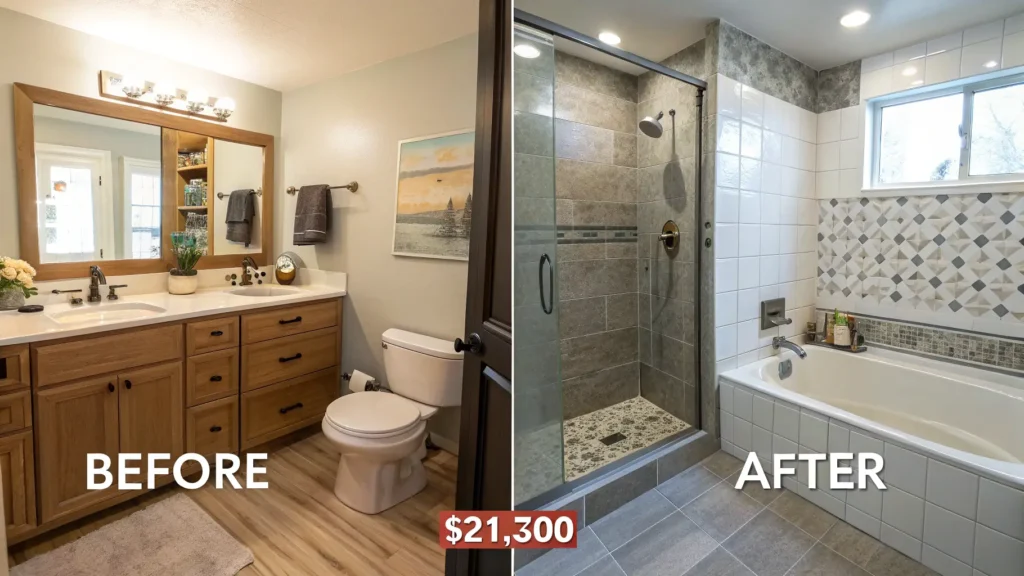
Case Study 3: The Luxury Spa Retreat – Total Cost: $48,000
- Before: Large (10×12 ft) master bathroom with dated finishes, small shower, and separate jacuzzi tub.
- Scope: Complete gut and redesign. Relocated toilet, oversized custom walk-in shower with rain head and body jets, freestanding soaking tub, custom dual vanity with marble countertops, heated floor, premium large-format porcelain tiles, smart mirror, and custom lighting plan.
- Cost Breakdown:
- Labor (GC, plumber, tiler, electrician, designer): $22,000
- Custom Dual Vanity & Marble Tops: $7,000
- Oversized Walk-in Shower (tile, fixtures, glass enclosure): $8,000
- Freestanding Soaking Tub: $2,500
- Heated Porcelain Floor Tile & Installation: $3,000
- Toilet (smart): $750
- Smart Mirror & Custom Lighting: $1,500
- Demolition/Disposal: $500
- Permits: $400
- Contingency: $2,350
- Lessons Learned: Professional design services were crucial for optimizing the new layout. Premium materials and advanced features significantly increased costs. A large contingency was wise given the complexity.
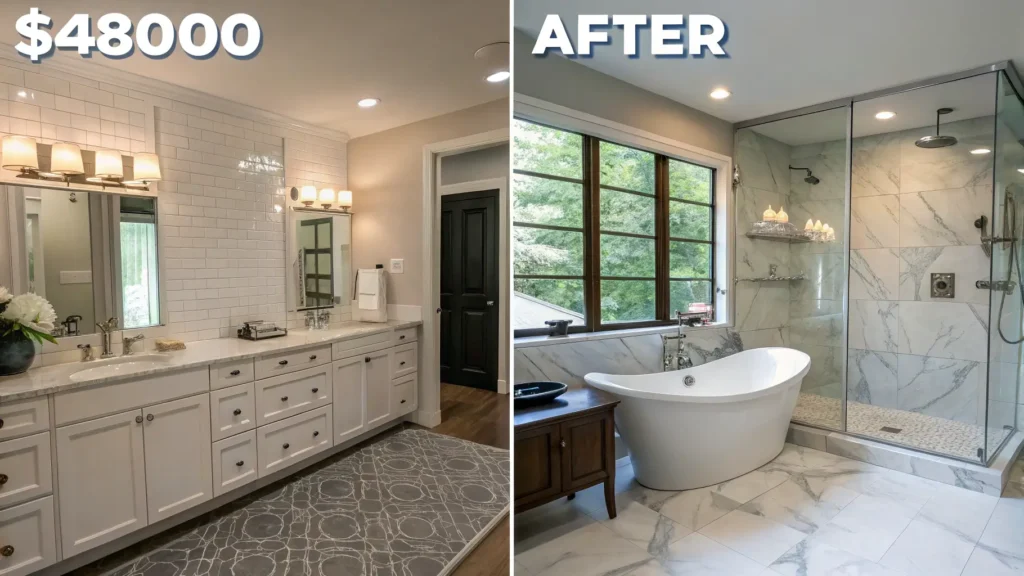
Your Personalized Bathroom Remodel Budget Planner & Tools
Creating a detailed and personalized budget is the most crucial step in preventing financial stress during your renovation. With the right tools, you can track expenses, manage contractors, and stay firmly within your realistic budget for a bathroom remodel.
- Define Your Scope Clearly: Before anything else, decide exactly what you want to achieve. A clear scope minimizes “scope creep” – the biggest budget killer.
- Research & Estimate: Use resources like this guide to get initial cost estimates for each component based on your desired quality level.
- Get Multiple Bids: Contact at least three reputable contractors for detailed quotes. Ensure they are bidding on the exact same scope of work for accurate comparison.
- Itemize Everything: Break down your budget into every single expense category: labor, fixtures, finishes, permits, demolition, and your essential contingency fund.
- Track Expenses Religiously: Use a spreadsheet or dedicated budgeting app to log every purchase and payment. Compare actual costs against your estimates weekly.
- Manage Project Expectations: Understand that renovations rarely go perfectly smoothly. Be prepared for minor delays and adjustments.
FAQs About Bathroom Remodel Costs
Here are answers to some of the most frequently asked questions about bathroom renovation costs, helping you further refine your realistic budget for a bathroom remodel.
Q: Is a bathroom remodel worth the investment?
A: Yes, generally. A mid-range bathroom remodel can recoup 60-70% of its cost at resale, while also significantly enhancing your daily living experience. It’s one of the top home improvement projects for ROI.
Q: How long does a bathroom remodel take?
A: A small refresh might take 1-2 weeks. A mid-range remodel typically takes 3-4 weeks. A full gut or luxury renovation can extend to 6-8 weeks or even longer, especially if custom materials or significant structural changes are involved. “Factor in at least a week of buffer time for material delays or unforeseen issues,” advises construction manager Emily White.
Q: What’s the cheapest way to update a bathroom?
A: The cheapest way is to focus on cosmetic changes: fresh paint, new hardware, updated lighting, a new shower curtain, and decluttering. You can also re-glaze an old tub or paint an existing vanity for a low-cost refresh.
Q: How much should I spend on a small bathroom?
A: For a small bathroom (e.g., 5×7 ft), a realistic budget for a cosmetic refresh is $3,000-$7,000. A mid-range renovation involving new fixtures and finishes might cost $7,000-$15,000, depending on material choices and labor rates.
Q: Can I do a bathroom remodel for $5,000?
A: Yes, but with limitations. A $5,000 budget typically covers a DIY or mostly DIY cosmetic update. This might include new paint, a new toilet, a basic pre-fabricated vanity, new light fixtures, and possibly LVP flooring. It generally won’t cover moving plumbing, extensive tiling, or major professional labor costs.
Conclusion: Build Your Dream Bathroom with a Realistic Budget
Embarking on a bathroom remodel is an exciting journey, and with proper planning, it doesn’t have to be a financially daunting one. By understanding the average costs, breaking down expenses by component, accounting for hidden fees, and leveraging smart savings strategies, you can confidently navigate your renovation. This guide has provided you with the comprehensive insights and tools necessary to create a truly realistic budget for a bathroom remodel.
